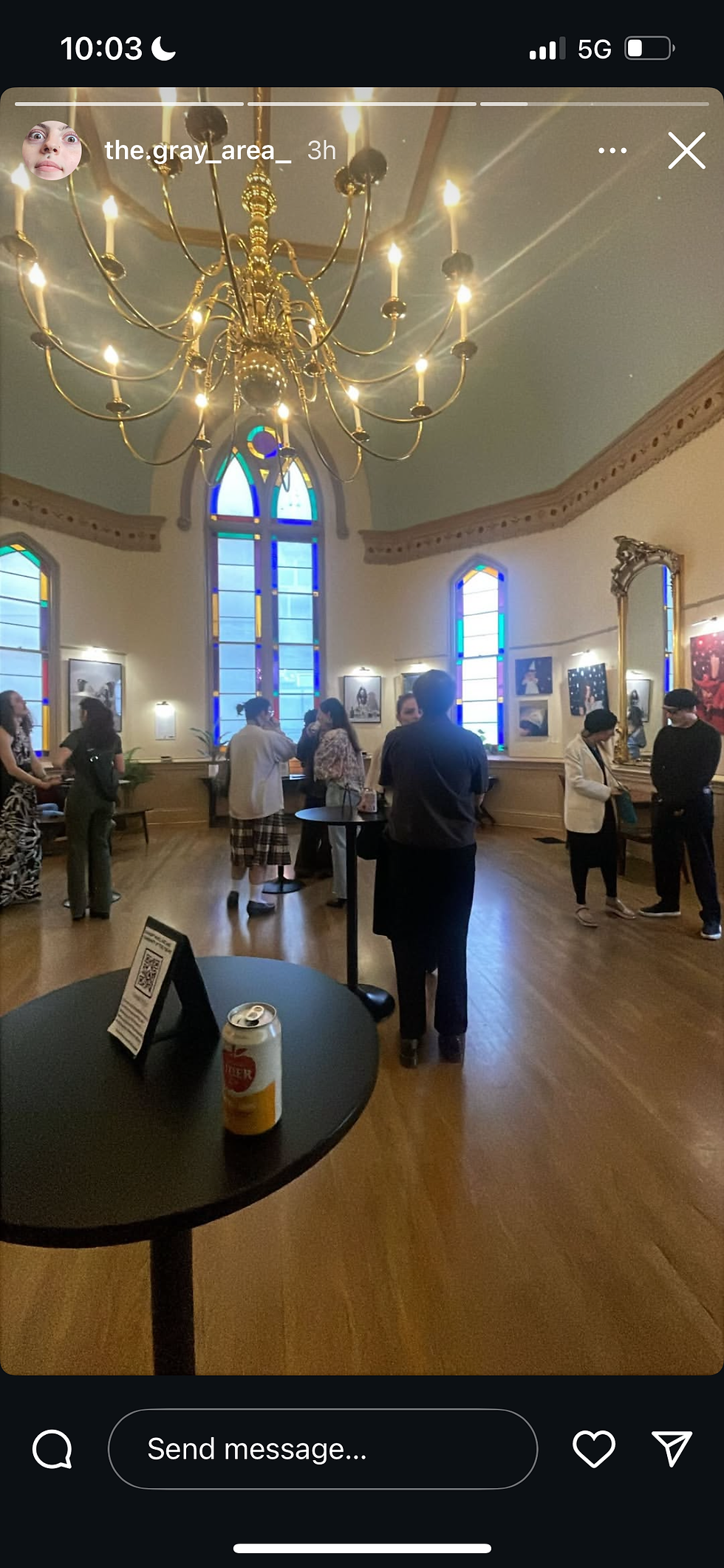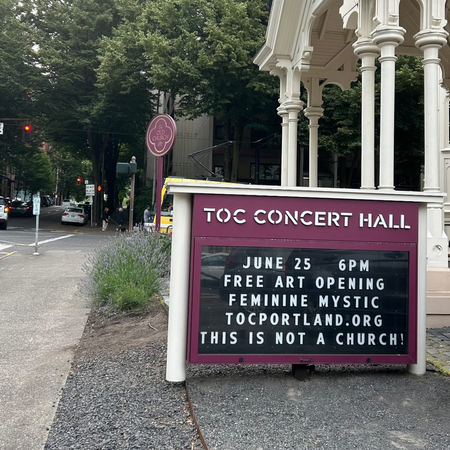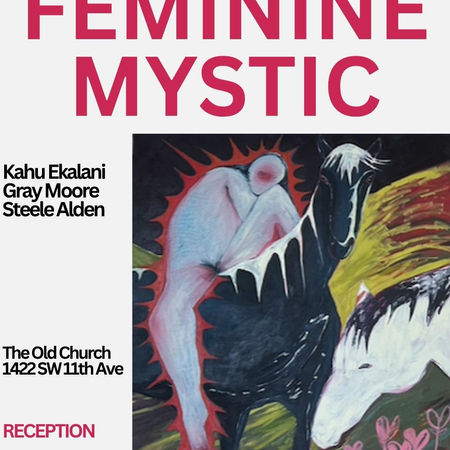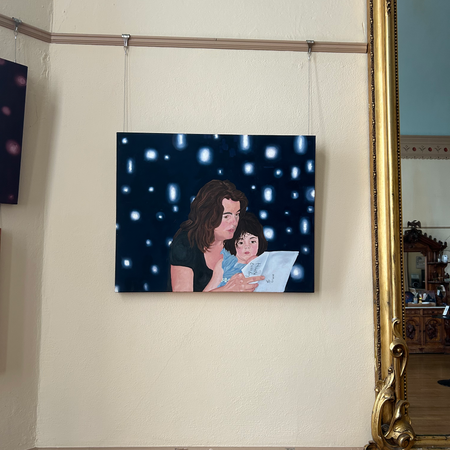
the feminine mystic (it's all an act)
its all an act its all an act its all an act its all an act its all an act
This show takes its name from a pivotal feminist text published in 1963 by Betty Friedan about the mental health crisis of young housewives in America during that time, The FEMININE MYSTIQUE. My personal copy, well-loved, is here with us today. The message of this book can be summarized in a quote which has been popularized by legendary drag queen, RuPaul, “we’re born naked and the rest is drag.”
In her book, Friedan describes the Feminine Mystique as “the problem with no name”. It’s an imagined lifestyle of America’s “perfect woman”. She builds an argument that this Perfect Woman was created and reinforced by those people, primarily men, working in government, education, advertising, entertainmentment, and elsewhere. This perfect woman is submissive, homemaker, childbearer, perfectly happy, and again, perfectly imaginary.
Today, we see the feminine mystique bubbling to the surface in the form of social media tradwives and more insidiously, politicians who uphold the female body as special and mystical to the extent that they value the body itself and it childbearing capabilities more than the person within it, not to mention the trans and queer gender identities which face a constant barrage of erasure. In a world where we see politicians running on platforms of enforcing traditional gender roles and abortion access is increasingly limited, conversations about gender and the meaning we make of it are extremely poignant
This brings us to the small group show you’ve come to see today. THE FEMININE MYSTIC (its all an act)
This show starts with a tapestry by Gray Moore, printed in red-orange ink is that titular phrase “its all an act” repeating all throughout. This piece calls to mind the history of fiberworks, a craft whose masters and practicers have historically been women or those with queer gender identities. We see here, too, a mixed media collage which highlights the grief and helplessness in submission–everything women sacrifice to fulfill these traditional roles. Red paint strokes cover the piece, evoking the blood spilt in gender violence & oppression.
Steele Alden is a 22 year old interdisciplinary visual artist currently based in Portland, OR. They graduated from the Pacific Northwest College of Art with a BFA in Fine Arts in 2025 and a focus in painting. They have exhibited in Portland OR, New Orleans LA and New York NY.
(Hail Mary)
In this painting, Alden reimagines Mary Magdalene and medieval Christian mystics whose ecstatic devotion made them androgynous and sexless in the eyes of the Church. At a time when appeals to ‘Christian values’ are regularly weaponized to erase queer identities, Alden’s work asks what it means to transcend (or to be erased by) one’s gendered body in pursuit of spiritual “purity.”
(BOW)
Steele’s work explores the intersections of queerness, christianity, lust, and dreams. Their dreamy painted compositions pull inspiration from subconscious desire, intuition, and historical queer references. Steele draws connections between modern queer lived experience and christian folklore through both blatant depictions and abstract nods.
(modern queer lived experience) - cyanotypes, photography
Kahu Ekalani is a similarly PNW-based analog photographer, specializing in haunting photo-collages that combine the surreal and the elemental, and is heavily influenced by organic aestheticism of the natural world.
(PROJECTING)
Layering the familiar human form with unexpected textures and distortions, Ekalani explores tensions between control and surrender, the psychological and the physical, the imaginary and the real. Her works featured in Feminine Mystic place female figures within natural history displays: pinned butterflies, bottled organs, dried flowers, scientific specimens.
(THE ORB)
Broadly, Ekalani's collections of photo-collage serve as visual meditations on memory, vulnerability, and the unconscious. Each portrait is an invitation to confront the self not as it is, but how it feels in moments in transformation. In doing so, Ekalani critiques the long-standing Western tendency to view femininity as uniquely unknowable and thus, collectible and controllable. Ekalani proposes a view of femininity which is introspective, complex, and encourages AGENCY in the feminine viewer.
(BABY)
Gray Moore is an oil painter currently residing in Portland, OR. Born with a passion for creating, their adolescence was spent participating in community art events, high school art classes and statewide shows. In 2022, they received the Forest Park Scholarship and began to study painting and printmaking at Pacific Northwest College of Art.
In the spring of 2024, Gray & I co-organized an art show for the first time, hosting it out of my own apartment in Portland, OR. For those of you who attended, this first image picks up where we left off, with prints of Gray as a baby, blowing out candles as a wish for the next year of life.
(BABY & MOTHER’S DAY)
Using their own childhood photos as reference, Moore’s most recent work explores the intersection of birth, death, motherhood, gender and sexuality through the lens of the monstrous feminine: a theoretical framework that examines how female monstrosity is constructed by patriarchy and enforced by societal influences, such as culture, media and politics.
Through memory, trauma and personal imagery, Moore reinterprets the ways traditional feminine archetypes, which we mentioned earlier as Betty Friedan’s “Feminine Mystique”, were praised and practiced throughout their childhood. By positioning the perceived “monstrous”--the version of gender that was upheld and enforced throughout their lived experience–in the center of each piece, they hold space for resistance and transformation.
These paintings and the figures inside of them become vessels for exploring historically repressed anxieties around gender, power, sexuality and the body. Each piece is an act of reclamation, an invitation to confront discomfort and recognize femininity beyond the limits imposed by patriarchal narratives. So much of our conversations around gender regulate our opportunities for individual agency. Adherence to rules, tradition, and even faith structures comes at the cost of honesty and personal expression. In light of this show’s theme, I challenge everyone in this room to realize their own agency, their own honesty, and commit to a life of true fulfillment.
It’s all an act, it’s all an act, it’s all an act. Find freedom and act like the rest of your life starts right now.
Power in Numbers
30
Programs
50
Locations
200
Volunteers
Project Gallery
























